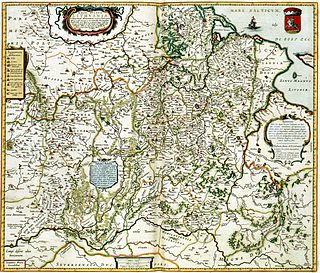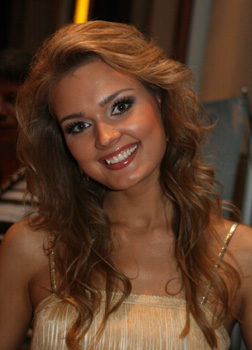Related Research Articles

The history of Lithuania dates back to settlements founded about 10,000 years ago, but the first written record of the name for the country dates back to 1009 AD. Lithuanians, one of the Baltic peoples, later conquered neighboring lands and established the Grand Duchy of Lithuania in the 13th century. The Grand Duchy was a successful and lasting warrior state. It remained fiercely independent and was one of the last areas of Europe to adopt Christianity. A formidable power, it became the largest state in Europe in the 15th century spread from the Baltic Sea to the Black Sea, through the conquest of large groups of East Slavs who resided in Ruthenia. In 1385, the Grand Duchy formed a dynastic union with Poland through the Union of Krewo. Later, the Union of Lublin (1569) created the Polish–Lithuanian Commonwealth. During the Second Northern War, the Grand Duchy sought protection under the Swedish Empire through the Union of Kėdainiai in 1655. However, it soon returned to being a part of the Polish–Lithuanian state, which persisted until 1795 when the last of the Partitions of Poland erased both independent Lithuania and Poland from the political map. After the dissolution, Lithuanians lived under the rule of the Russian Empire until the 20th century, although there were several major rebellions, especially in 1830–1831 and 1863.

Vilnius is the capital and largest city in Lithuania and the second most populous city in the Baltic states. As of January 2024, Vilnius' estimated population was 602,430, while the Vilnius urban area extends beyond the city limits and had an estimated population of 708,627.

Vilnius International Airport is the airport of Vilnius, the capital of Lithuania. It is located 5.9 km (3.7 mi) south of the city center. It is the largest of the three commercial airports in Lithuania by passenger traffic, with one runway and 5 million passengers a year. Vilnius International Airport serves as a base for airBaltic, Ryanair, and Wizz Air. The airport is managed by state-owned enterprise Lithuanian Airports under the Ministry of Transport and Communications.

Vilnius County is the largest of the 10 counties of Lithuania, located in the east of the country around the city Vilnius and is also known as Capital Region or Sostinės regionas by the Lithuanian statistics department and Eurostat. On 1 July 2010, the county administration was abolished, and since that date, Vilnius County remains as the territorial and statistical unit.

The Grand Duchy of Lithuania was a European state that existed from the 13th century to the late 18th century, when the territory was partitioned in 1795 among the Russian Empire, the Kingdom of Prussia, and the Habsburg Empire of Austria. The state was founded by Lithuanians, who were at the time a polytheistic nation born from several united Baltic tribes from Aukštaitija.

The Polish–Lithuanian War was an undeclared war between newly independent Lithuania and Poland following World War I, which happened mainly, but not only, in the Vilnius and Suwałki regions. The war is viewed differently by the respective sides. According to Lithuanian historians, it was part of the Lithuanian Wars of Independence and lasted from May 1919 to 29 November 1920. Polish historians deem the Polish–Lithuanian war as occurring only in September–October 1920. Since the spring of 1920, the conflict became part of the wider Polish–Soviet War and was largely shaped by its progress. It was subject to international mediation at the Conference of Ambassadors and the League of Nations.

Tomas Venclova is a Lithuanian poet, prose writer, scholar, philologist and translator of literature. He is one of the five founding members of the Lithuanian Helsinki Group. In 1977, following his dissident activities, he was forced to emigrate and was deprived of his Soviet citizenship. Since 1980, he has taught Russian and Polish literature at Yale University. Considered a major figure in world literature, he has received many awards, including the Prize of Two Nations, and The Person of Tolerance of the Year Award from the Sugihara Foundation, among other honors.
The city of Vilnius, the capital and largest city of Lithuania, has an extensive history starting from the Stone Age. Vilnius was the head of the Grand Duchy of Lithuania until 1795, even during the Polish–Lithuanian Commonwealth. The city has changed hands many times between Imperial and Soviet Russia, Napoleonic France, Imperial and Nazi Germany, Interwar Poland, and Lithuania. It was especially often the site of conflict after the end of World War I and during World War II. It officially became the capital of independent, modern-day Lithuania when the Soviet Union recognized the country's independence in August 1991.

Vilnius Region is the territory in present-day Lithuania and Belarus that was originally inhabited by ethnic Baltic tribes and was a part of Lithuania proper, but came under East Slavic and Polish cultural influences over time.

The Lithuanian Wars of Independence, also known as the Freedom Struggles, refer to three wars Lithuania fought defending its independence at the end of World War I: with Bolshevik forces, Bermontians, and Poland. The wars delayed international recognition of independent Lithuania and the formation of civil institutions.

Lesbian, gay, bisexual, and transgender (LGBT) people in Lithuania face legal challenges not experienced by non-LGBT residents. Both male and female expressions of same-sex sexual activity are legal in Lithuania, but neither civil same-sex partnership nor same-sex marriages are available, meaning that there is no legal recognition of same-sex couples.

The Poles in Lithuania, also called Lithuanian Poles, estimated at 183,000 people in the Lithuanian census of 2021 or 6.5% of Lithuania's total population, are the country's largest ethnic minority.

Jurgita Jurkutė is a Lithuanian actress and beauty pageant titleholder who is the winner of Miss Lithuania 2007 pageant.
The Suwałki Agreement, Treaty of Suvalkai, or Suwalki Treaty was an agreement signed in the town of Suwałki between Poland and Lithuania on October 7, 1920. It was registered in the League of Nations Treaty Series on January 19, 1922. Both countries had re-established their independence in the aftermath of World War I and did not have well-defined borders. They waged the Polish–Lithuanian War over territorial disputes in the Suwałki and Vilnius Regions. At the end of September 1920, Polish forces defeated the Soviets at the Battle of the Niemen River, thus militarily securing the Suwałki Region and opening the possibility of an assault on the city of Vilnius (Wilno). Polish Chief of State, Józef Piłsudski, had planned to take over the city since mid-September in a false flag operation known as Żeligowski's Mutiny.
Miss Lithuania is a national Beauty pageant in Lithuania.
The Battle of Vilnius, Wilno, or Vilna was an attack by Russian and Cossack forces on Vilnius, the capital of the Grand Duchy of Lithuania within the Polish–Lithuanian Commonwealth, that occurred on 8 August 1655 during the Russo-Polish War (1654–67). The Polish–Lithuanian forces under the leadership of Great Hetman Janusz Radziwiłł were defeated by the Russian army of Alexis of Russia. It was the first time that a foreign power managed to capture the Vilnius Castle Complex. The six-year Muscovite occupation that followed resulted in a major depopulation and a decline of the city for many years to come. The defeat was one of the reasons Janusz Radziwiłł and several other Lithuanian magnates surrendered the Grand Duchy to Sweden at the Union of Kėdainiai.
Gritė Maruškevičiūtė is a Lithuanian model and beauty pageant titleholder who won Miss Lithuania 2010. She represented Lithuania in Miss World 2010 on October and she reached top 40 at beach beauty event.
This article is about the particular significance of the year 2010 to Lithuania and its people.
This article is about the particular significance of the year 2011 to Lithuania and its people.

Rudamina is a town in Vilnius district municipality, Vilnius County, east Lithuania, it is located only about 1 kilometre (0.62 mi) south-east of Vilnius city municipality. As of the 2001 census, the town had a population of 3937 people. The village has a Catholic church.